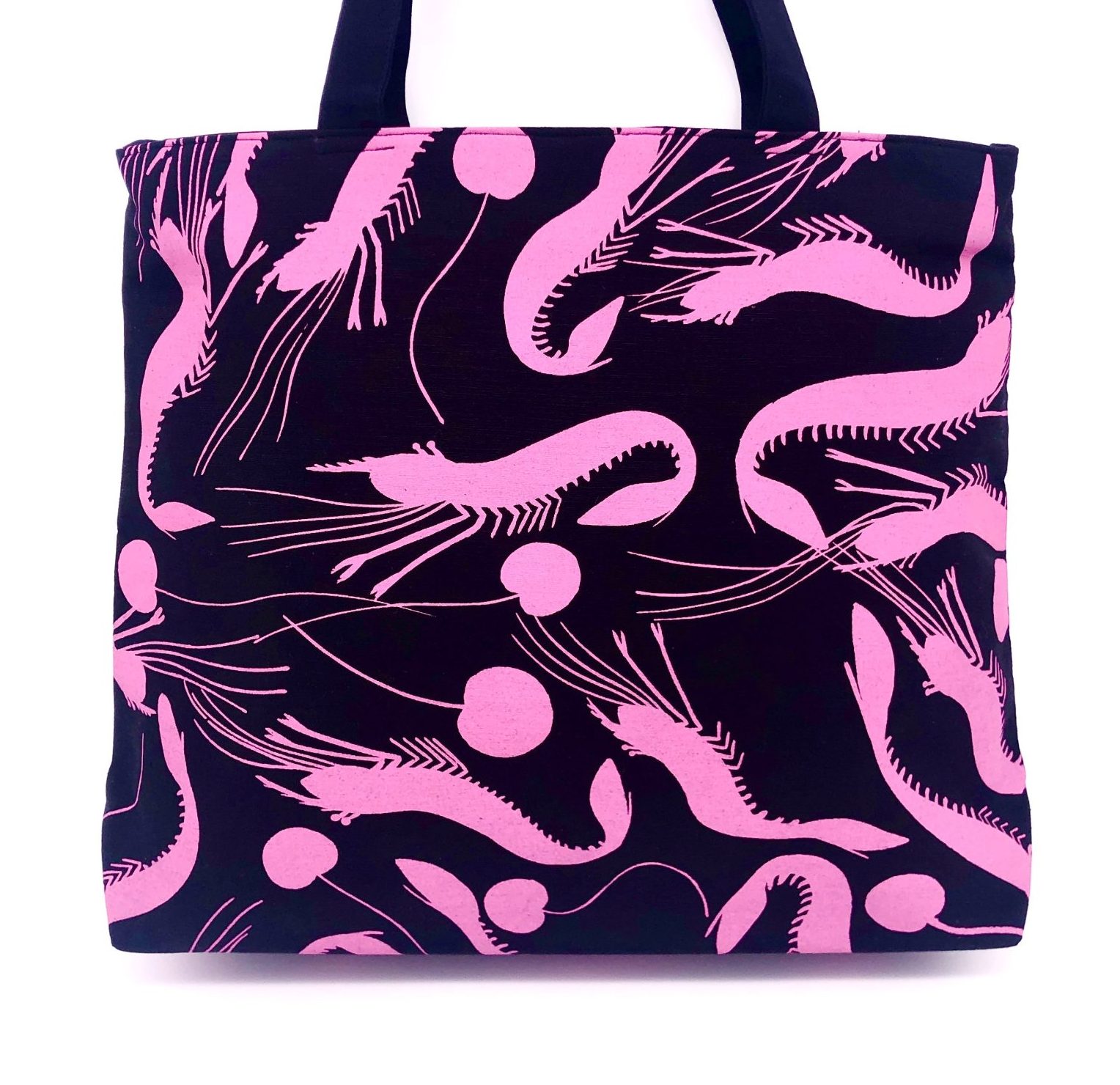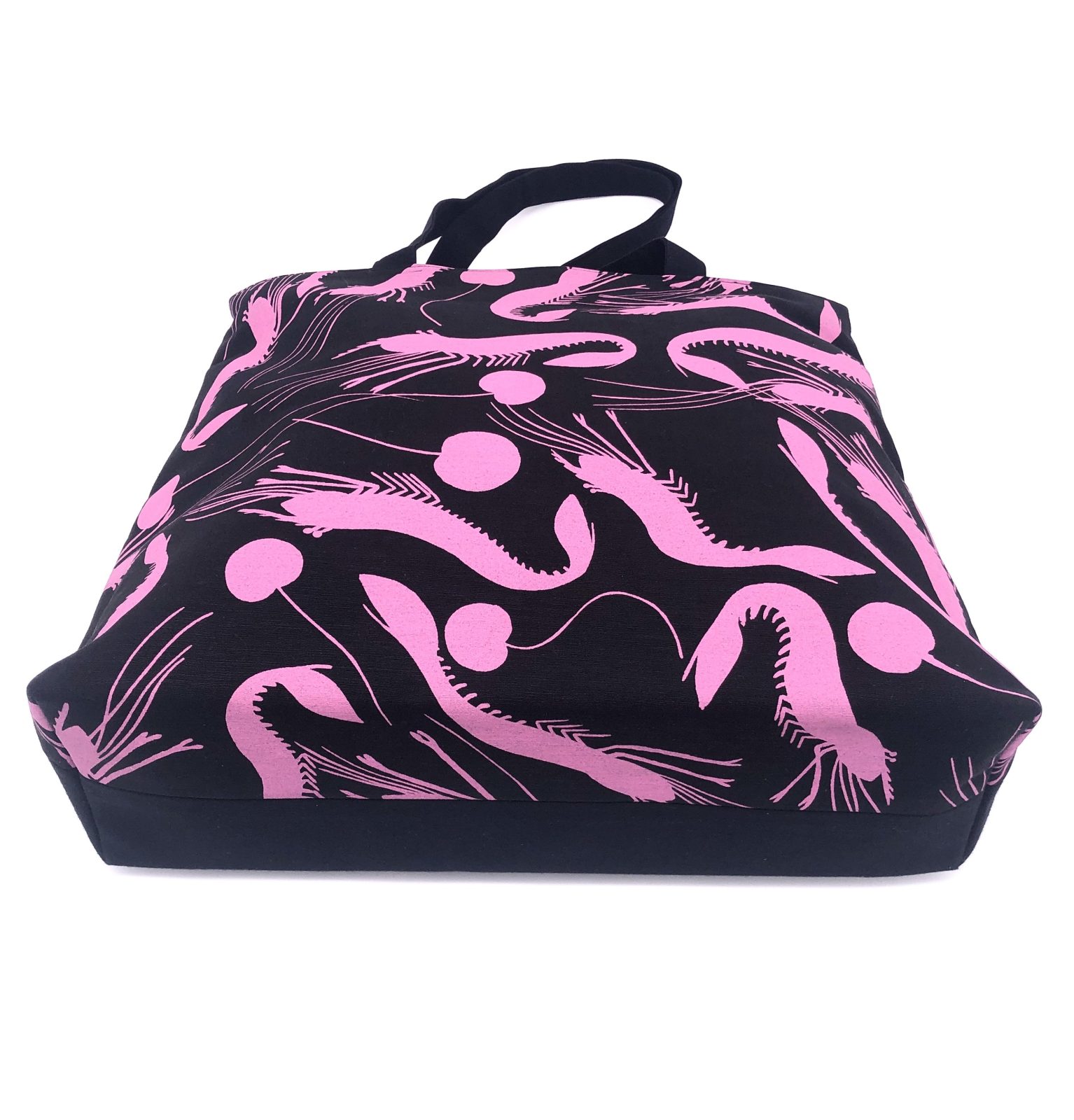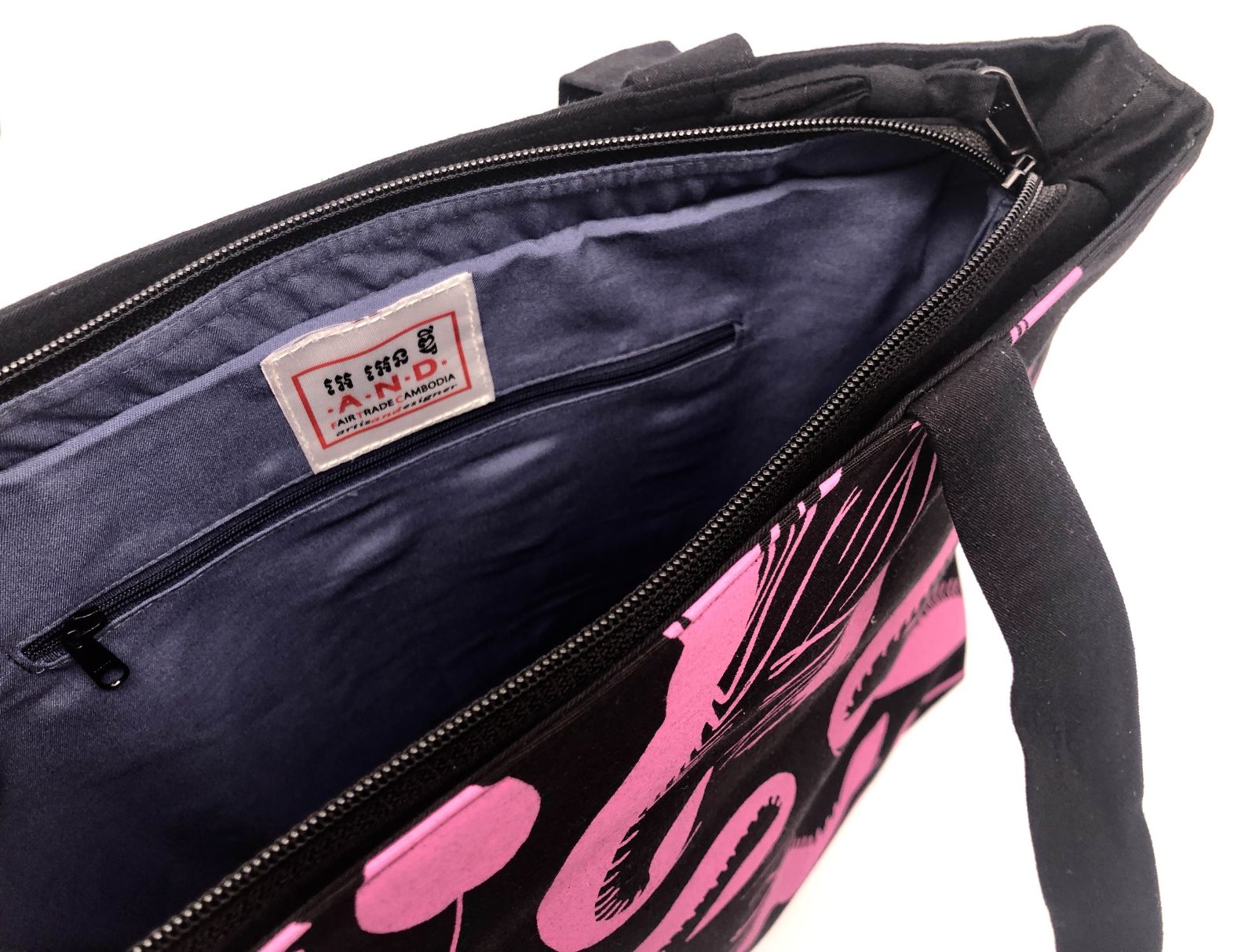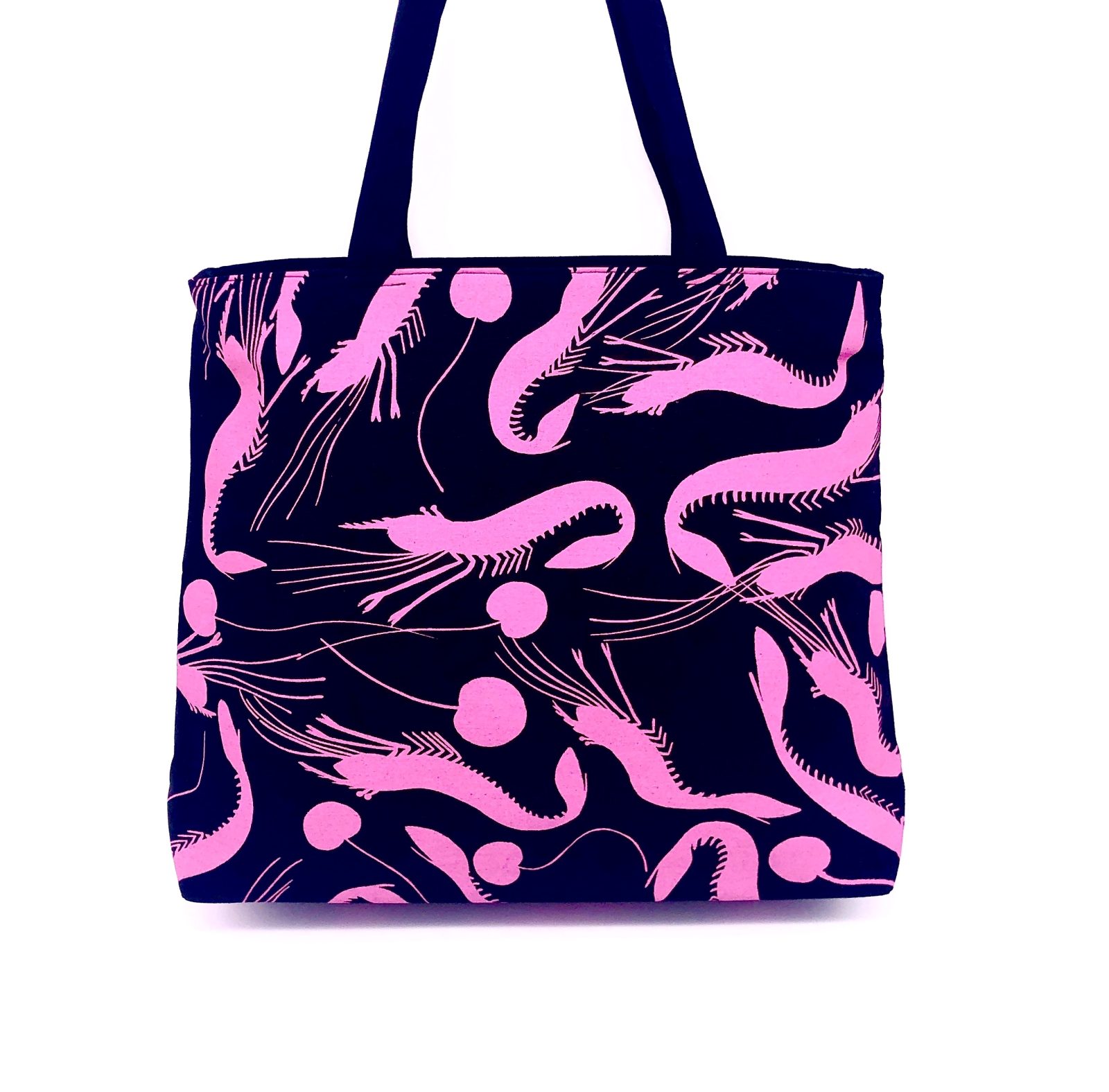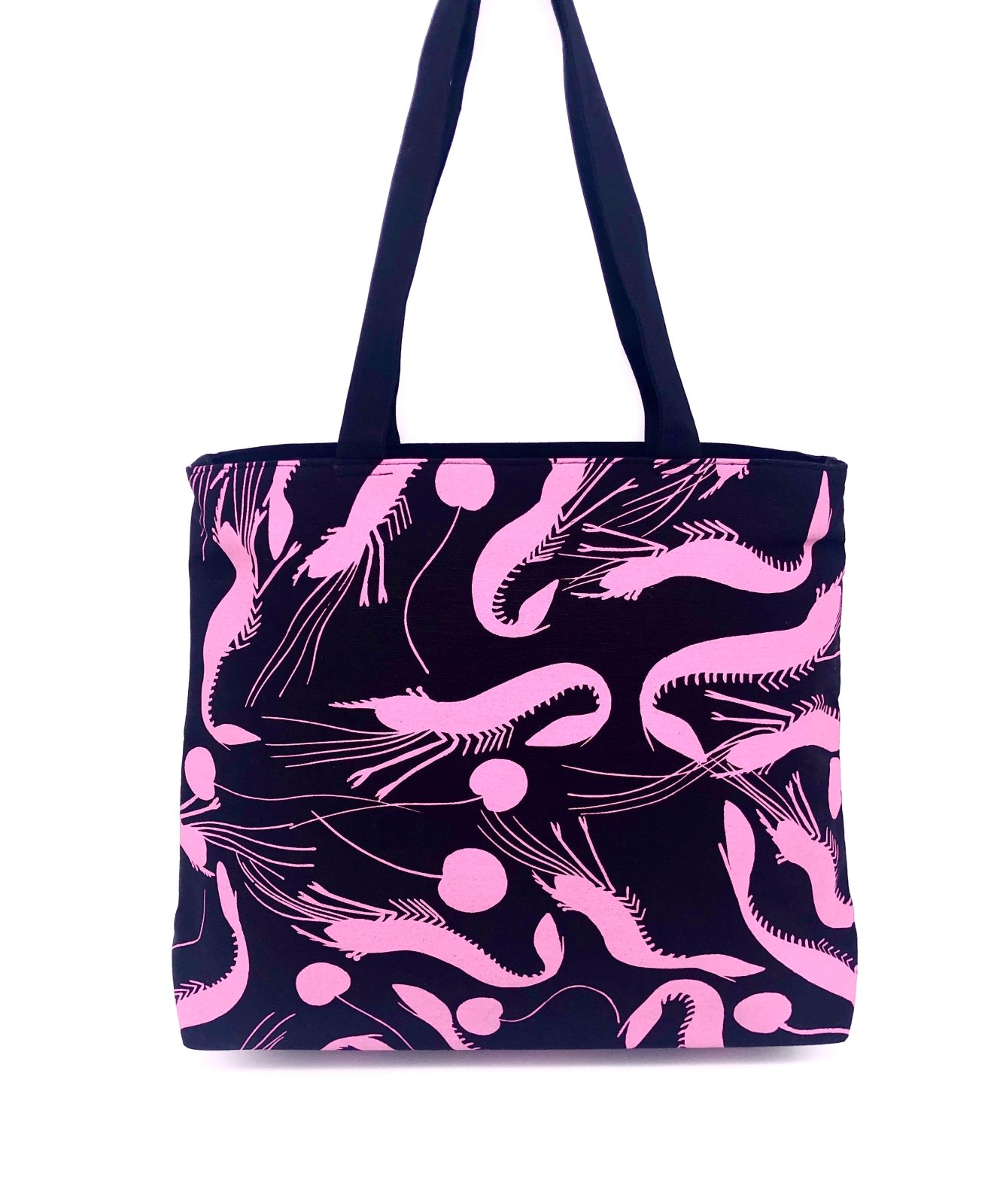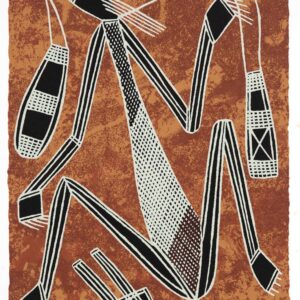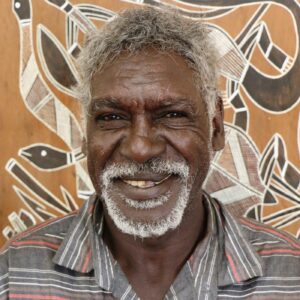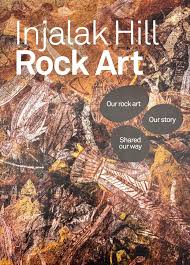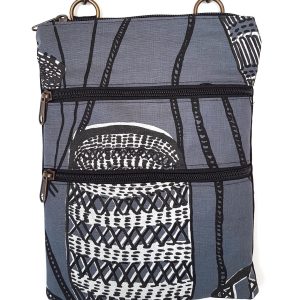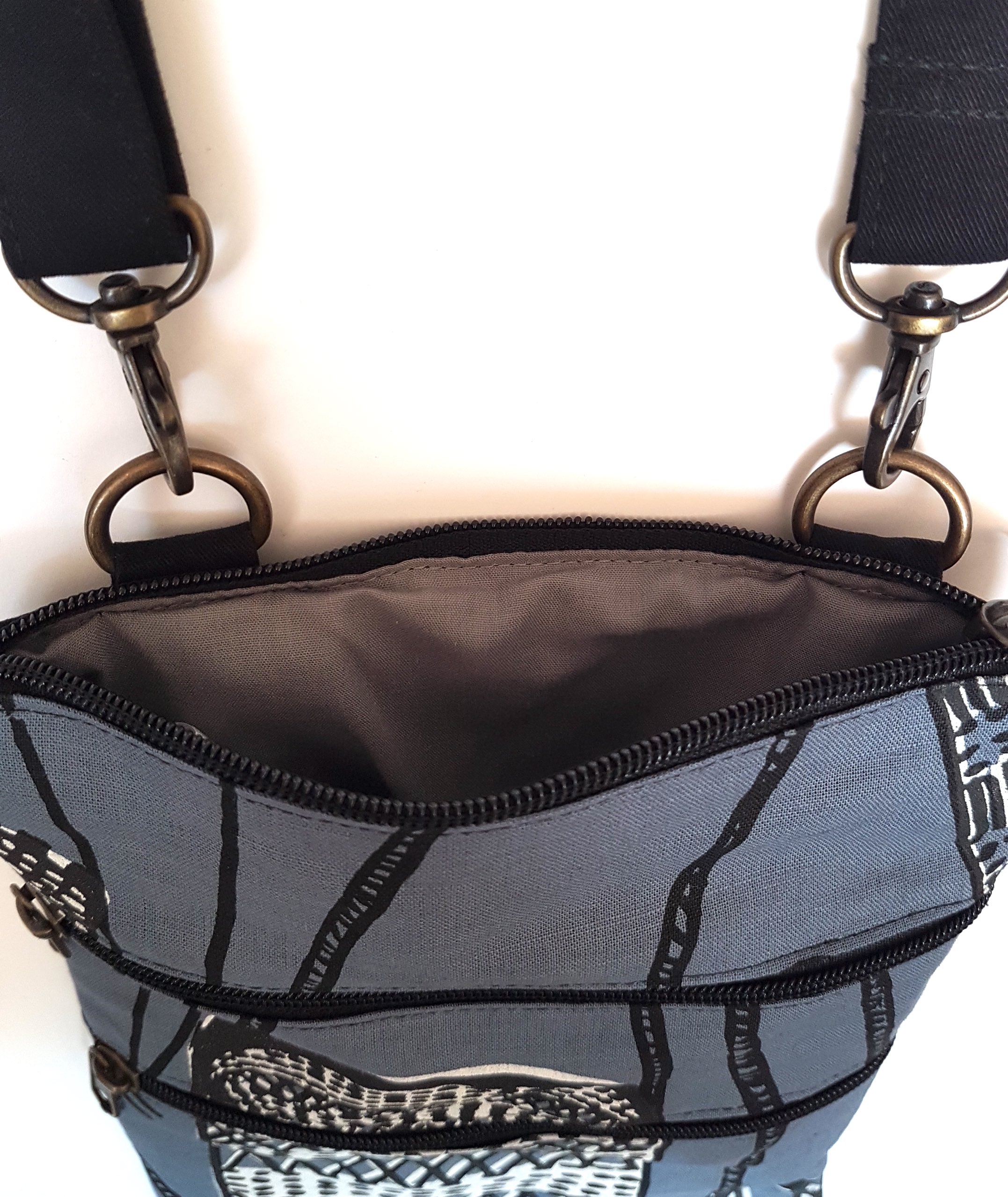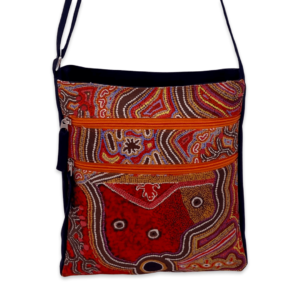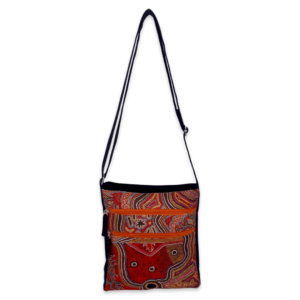Description
Fabric and color: the base cloth of the printed fabric is black. The design has been hand screen-printed with pink innk. The photos are colour accurate.
Details:
h: 35 cm (14 inch)
w: 40 cm (16 inch)
d: 11 cm (4.5 inch)
Features:
- Zip closure
- Fully lined
- Internal pockets (one with zip)
- Can hold itself upright
- Handles securely attached
- Can hold a 13 inch laptop and A4 files easily
- Gusset at the base
- Limited Edition
- Fabric design story supplied with each bag
- Fabric hand printed in Australia
- Made by Women For Women Foundation Cambodia
How was it made?
The fabric was hand-printed by Aboriginal printers in the remote community Gunbalanya (Oenpelli) then beautifully crafted by our fair trade partners in Cambodia.
Note: The placement and color variation of the fabric design is unique and special on every bag
*
The designer: Reuben Manakgu
As Injalak’s screenprint production manager, Reuben is in charge of a small and dedicated team of Bininj men. Reuben’s artistic eye can be noted in his management skills, technical screen-print knowledge and talent for creating beautiful design colourways.
The design:
Wakih (Leptopalaemon gagadjui) is a freshwater shrimp found only in West Arnhem Land, hence the species name “gagadjui” derived from Gagudju, the Indigenous name for the language and people of Kakadu. Bininj (Aboriginal people) still catch it today, in billabongs and waterways where there is a deep section. A lot of wakih can be caught in the creeks of the artist’s country, Mangardubu, north of Gunbalanya. He catches them with a throw net or a piece of meat on the end of a fishing line and entices them into the shallows where they can be speared. The silhouette style used in this design is ancient in origin and common in the rock art of West Arnhem Land.

